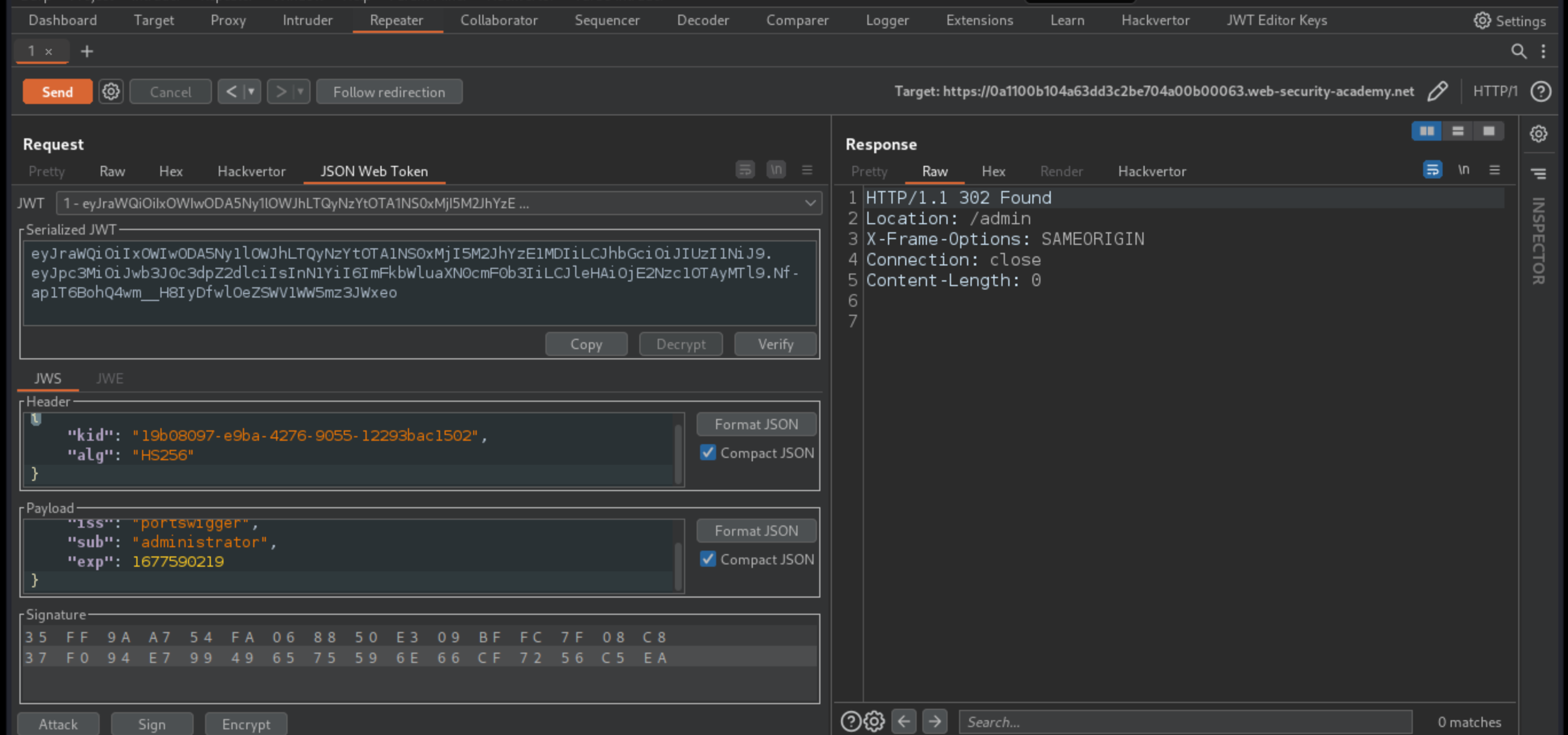JWT authentication bypass via weak signing key
Description
This lab uses a JWT-based mechanism for handling sessions. It uses an extremely weak secret key to both sign and verify tokens. This can be easily brute-forced using a wordlist of common secrets.
Reproduction and proof of concept
Brute-force the secret key
In Burp, load the JWT Editor extension from the BApp store.
In the lab, log in to your own account and send the post-login
GET /my-accountrequest to Burp Repeater.In Burp Repeater, change the path to
/adminand send the request. Observe that the admin panel is only accessible when logged in as the administrator user.Copy the JWT and brute-force the secret. You can do this using hashcat and the wordlist of well-known secrets:
hashcat -a 0 -m 16500 <YOUR-JWT> /path/to/jwt.secrets.list
If you’re using hashcat, this outputs the JWT, followed by the secret. If everything worked correctly, this should reveal that the weak secret is
secret1.
Generate a forged signing key
Using Burp Decoder, Base64 encode the secret that you brute-forced in the previous section.
c2VjcmV0MQ==
In Burp, go to the JWT Editor Keys tab and click New Symmetric Key. In the dialog, click Generate to generate a new key in JWK format. Note that you don’t need to select a key size as this will automatically be updated later.
Replace the generated value for the
kproperty with the Base64-encoded secret.
{
"kty": "oct",
"kid": "dcae7212-244c-4a69-a24d-5639fdf4d3ed",
"k": "c2VjcmV0MQ=="
}
Click OK to save the key.
Modify and sign the JWT
Go back to the
GET /adminrequest in Burp Repeater and switch to the extension-generated JSON Web Token message editor tab.In the payload, change the value of the
subclaim toadministrator.At the bottom of the tab, click Sign, then select the key that you generated in the previous section.
Make sure that the
Don't modify headeroption is selected, then click OK. The modified token is now signed with the correct signature.Send the request and observe that you have successfully accessed the admin panel.

In the response, find the URL for deleting Carlos (
/admin/delete?username=carlos). Send the request to this endpoint to solve the lab.
Exploitability
An attacker will need to log in to wiener:peter; brute-force the website’s secret key; use it to sign a modified session token that gives access to the admin panel at /admin; then delete the user carlos.